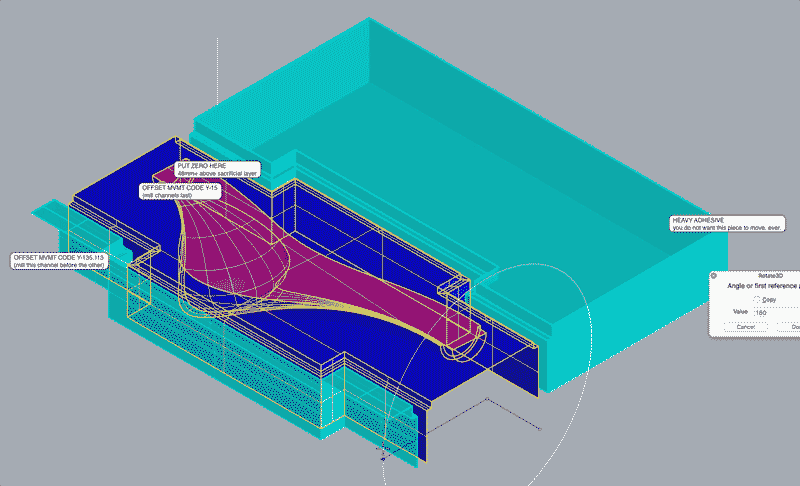Tags
Background
Computer Numerical Control (CNC) is a method of directing machines via a computer programmed sequence of commands. Without requiring human involvement in intricate machine movement, a significantly higher design fidelity and accuracy is possible. Further, translating computer produced designs into machine made things can be a more faithful procedure and highly replicable. Not all machines can do all things, however, and unique material qualities influence variable machine outcomes. Until machines are able to recognize their own shortcomings and adjust accordingly, we need to be machine literate. In this post, I will be exploring the possibilities of a CNC three-axis mill cutting plywood strictly two-dimensionally. I plan to create a kit of parts that when combined make a big three-dimensional thing. The process will be quickly creating an initial generative design influenced heavily by precedent, testing machine and material constraints based on the hopes of the design, tuning the design and finally producing a first prototype.
3-D Computer-Controlled Cutting posts...
- Grow module | Design and fabrication | 2017 Jun 13 | 7 minute read
- Milling a composite mold | 2017 May 12 | 8 minute read
- Star puzzle : Child's play? | 2017 Apr 25 | 5 minute read
My idea is to first create a small modular testing garden. I began with some sketches on paper and Rhinoceros. The bioelectrochemical modules are red and the frame is purple. I think this way will be able to be broken down and assembled easily and can be grown or reduced by adjusting the array. While the sketch shows a six by six array, I might reduce it to five by five. The testing modules were essentially cubes. This module is has a smaller bottom half to create a lip for sitting on the structure. In the upper portion there is...
I am preparing a mold of four parts: two outside halves and two inside halves. Then I plan to make a burlap plus resin composite surface around the two inner halves. Finally, I use the outer halves to compress the composite as it cures. I have yet to try milling multiple surfaces from one block of material. Well, until today. The inner halves each require milling on two sides of the material. I sized the molds to the constraints of our lab's Roland MDX-40A benchtop CNC machine. The XY maxes are 305mm according to the manual. Z max is dependant...

For my niece's birthday, I three-d printed a star puzzle. The toy however could never be dismantled after I muscled it together due to poor printer calibration on my part (a running theme in this blog). Further, duplicating the toy many times over comes with the time factor of three-d printing. Hint : slow. So, I thought it would be fun and good proving grounds to revisit this project in this exercise. And, the other day she asked if I had made the better version of her toy yet and gave me no leniancy for time spent building my first...